|
Return to Table of Contents
Impacts of Climate Change - On Crops
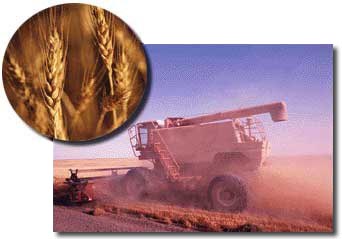
Source: EPA |  | Harvest: Not so good for allergies, but a fantastic Neil Young album! |
As a lad I spent many
a day in the field bailing hay and working in
the garden. I hated it! I brought a tear to my father’s eye the
day I told him I was going to Astroturf the whole lot the day after
he died! It took lots of time and nurturing to grow the vegetables and
other foodstuff. I would have rather have been elsewhere! To get
the prize-winning leeks the ground had to be fertile, you also needed
the right amount of sun and the right amount of rain (not usually a
problem in England). We had good seasons and bad, the weather certainly
has an impact, If the planet warms up, and
or there is more carbon dioxide in the atmosphere the plants will and grow quicker. Carbon dioxide after all is where the mass of
the plant comes from (plant an acorn wait 50 years and see how large
the oak tree has grown, where does all the mass come from, not the ground
but from the atmosphere, good old CO2!)
 | 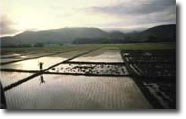
Source: EPA Reminiscent of all the Vietnam war movies this rice paddy requires enough water to flood the field for rice to grow. |
But if the planet warms then it is likely that the evaporation will
increase and that will impact the distribution of precipitation will change: some places will be wetter but others will be drier. Change
here is very important! Wheat for example is grown in the heartland
of America where the conditions are appropriate. While
initially at least the land may increase their productivity as it gets
warmer still, productivity will decrease and the appropriate location
for growing wheat may now be across the boarder in Canada.
Click on the speaker icon to listen to an audio track.
 (Text Version) (Text Version)
Imagine growing rice without a paddy, hard to do! It is not all doom
and gloom climate change may prove to be beneficial in certain areas
for certain crops, perhaps doom and gloom is appropriate for some other
crops however. We could always adapt to climate change and plant other crops, the developed
world regularly irrigates (providing we can find the water or divert
the occasional river). Famine in other locations however may be a very
real threat. The combination of changing temperature, changing precipitation
and the response of the crop are the important factors.
|
Impacts of Climate Change - On Coastal Regions
 | 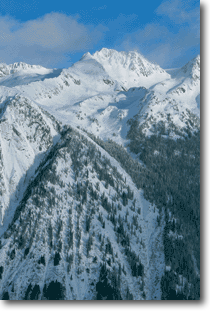
Source: EPA Snow in the mountains, bright and white because of the reflected sunlight which is why you wear ski goggles with UV protection-prevent snow blindness. |
I was one of the few who liked "Water World" with Kevin Costner;
I thought it was a decent movie. The premise is that the oceans had
risen and flooded the whole planet with only small isolated fragments
of land being the “Holy Grail”. One of the big fears is that
with climate change we might see a similar event (although not as catastrophic).
When water warms it expands. If the temperature changes then we should
expect the sea level to rise (although some places on the planet will
be cooler the overall trend is a warming one). Glaciers will melt also
(although new ones might also form) also adding to the volume of water
in the ocean.
If you look at the wildlife in England and France for example you
will find them to be similar, even the dinosaur fossils. Presuming that
they did not swim across means that there was one a land bridge where
the English Channel now is. These events, where what is now land at
one time being under the ocean is relatively common. Odds are that where
you are now on what was once ocean (a
good chunk of North America was once undersea). So this is not such
a fantastic an idea, as it may seem.

Source: EPA Planet earth even while sleeping is lit up like a Christmas tree. Click here or on the image to see a very large version of the earth at night. |  |
Of course you should worry if you are close to the coast and a high
percentage of most
populations are close to the coast as shown in this image from NASA
. Certain island nations are also
in the “hot seat” with regard to sea level rise.
Click on the icon to listen to an audio track about land reclamation.
 (Text Version) (Text Version)
|

Source: JPM The impact of rising oceans will be felt along the low-lying coast. Watch out Indonesia! The more coast you have the greater the impact
|
|
|
Below is an image of the US at night taken from space. Where is all the light coming from? Move your mouse over the image to see the concentration
of the US population. What is the relationship between the two?

|
Cough, Cough, Cough, Kick the Bucket!
 | 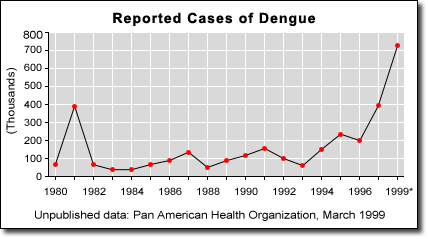
Source: CDC Dengue cases have increased. Could this be due to warmer weather increasing the duration (more days) of mosqueto activity in the Summer? |
Warmer and wetter environments, or warmer waters, might well allow
diseases to enter environments not previously exposed. Infestation may
increase; tropical diseases associated with warmer climates might well
appear in US cities. Dengue is one example that is relatively rare in
the North East but we might observe an increase as the carrier the mosquitoes
will be active for a greater time period because of the climate change.
It is a nasty viral disease that causes rashes and soreness in joints,
very unpleasant!
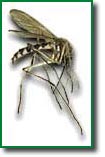
Source: EPA Buzzzzzz, move the mouse over this image for a pleasant surprise! |  |
Water quality is another issue that will be influenced by climate change.
There may be more algae blooms and the possibility of water borne diseases
increases. Increases temperature or even increased snowfall (remember
change is the issue) will cause more deaths from the extremes of heat
or cold. Air quality can also be influenced. In all, not a positive
impact on our health (is predicted).
|
(Text Version)
(Text Version)
 Source: JPMThe impact of rising oceans will be felt along the low-lying coast. Watch out Indonesia! The more coast you have the greater the impact
Source: JPMThe impact of rising oceans will be felt along the low-lying coast. Watch out Indonesia! The more coast you have the greater the impact







